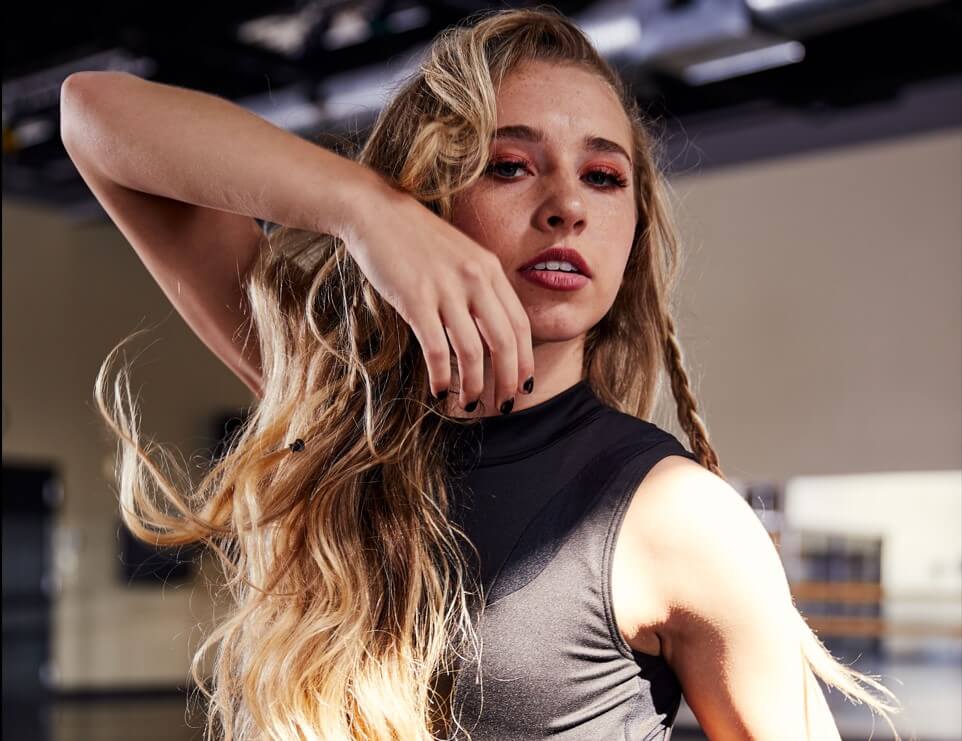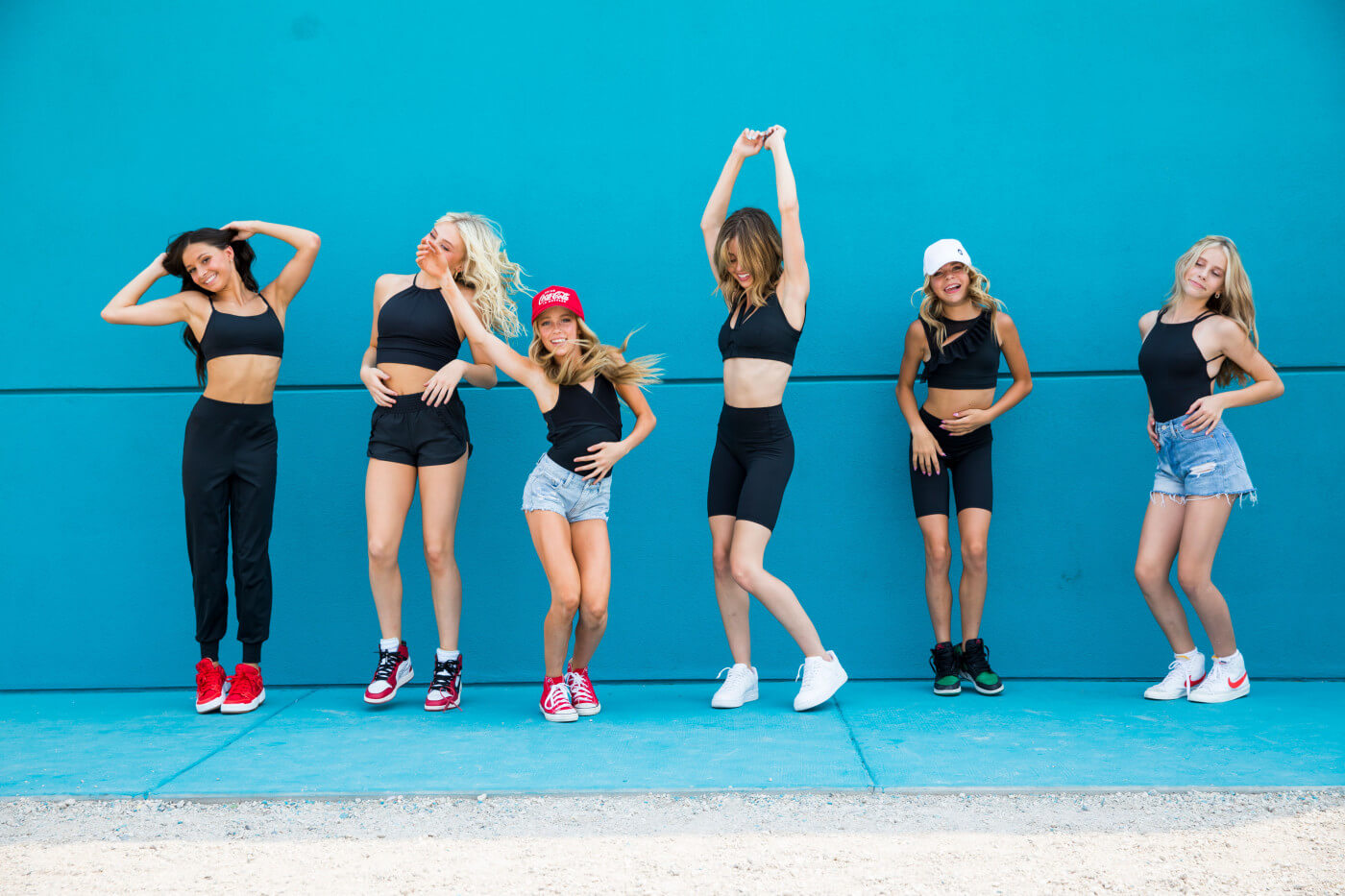
9 Steps to Choreographing a Dance Like a Pro
Listen to article
Audio generated by DropInBlog's Blog Voice AI™ may have slight pronunciation nuances. Learn more
We’ve all seen one—a dance that pulls us in, keeps our attention, and moves us to emotion. As a dance coach, you strive every day to teach your students choreography that meets these aspirations.
You already know the basics of choreography—like playing with shapes and working with your dancers’ strengths—but you also know there are more steps to choreographing a dance for achieving professional results.
The professionals here at Jo+Jax want to share what they do to wow a crowd because we want you to be proud of the dance you create. So here are 9 steps to choreographing a dance that go beyond the basics and into the techniques used by the masters themselves.
- Study Dance Technique
- Don’t Rely on the Music to Tell the Story
- Have a Legible “Throughline”
- Plan Your Designs
- Incorporate Elements of Rhythm and Dynamics
- Unify with Phrases
- Compose Your Phrases into Form(s)
- Write Down the Choreography
- Get a Copyright
9 Tips for Choreographing a Dance Like a Pro
There’s a lot of ground to cover in a short amount of time, so let’s get started with the 9 steps to choreographing a dance using professional tips!
1. Study Dance Technique
To gain competence, you should understand and trust your intuition. However, you can only get to that point through study, analysis, and examination of technique. Take Albert Einstein’s saying to heart: “Intuition is nothing but the outcome of earlier intellectual experience.”
Gain this experience by studying dance videos and informative articles written by other dance experts, even in genres that aren’t your own. As you do so, notice the differences between body alignment and technique. This can give you a more well-rounded education that can inform your creativity.
2. Don’t Rely on the Music to Tell the Story
Some choreographers select a piece of music that inspires them to create a dance. Others have a general idea for their dance and then select music that complements the moves.
Either way, you must create a structure without letting the music impose anything. Though music is an inspiration, the dance needs to stand on its own. If the choreography isn’t coherent without the help music provides, the dance may not be strong enough.
3. Have a Legible Throughline
A “throughline” is a single train of thought that satisfyingly connects every part of the dance from beginning to end. Think of it as a logical storyline. Maintaining a strong throughline means the purpose of the dance never gets lost, and all movements further the intent of the piece.
4. Plan Your Designs
There are two types of design to work through with your choreography:
- Temporal design is the visual timing of structured dance movements. It involves movements that take advantage of auditory rhythms for timing purposes. (We’ll talk more about rhythm below).
- Spatial design is the interplay between the body and the space surrounding it. Plan how the environment will be perceived and understood depending on the body’s position within it.
These designs can be expressed through natural movement. There is locomotor body movement that involves changing location in space (leaping, sliding, etc.) and non-locomotor body movement that occurs around its own axis (twisting, bouncing, etc.).
5. Incorporate Elements of Rhythm and Dynamics
Five elements of rhythm and dynamics can help you incorporate and time out different movements into the dance:
- Pulse: This is the steady succession of beats (the beat your foot naturally taps out).
- Accent: This is the most emphasized beat in a series of notes (like the first step in a waltz phrase). There may also be a tonic accent (a higher-pitched or louder note) or an agogic accent (a beat that is longer in duration).
- Underlying beat: These are the softer beats that follow the accent beat (the two other steps in a waltz phrase).
- Tempo: This is the speed of movement. A slower tempo can convey elegance and confidence, but also sadness or fear. A faster tempo can convey excitement and happiness, but also anger or anxiousness.
- Intensity: This is the level of physical exertion required to perform a particular move or a combination of moves.
6. Unify with Phrases
A “phrase” in dance can be compared to a phrase in music or written text. In dance, a series of logical and natural movements complete a visible pattern with a beginning, middle, and ending. Working within this phrasing framework makes a dance coherent and easy for the audience to understand.
7. Compose Your Phrases into Form(s)
A form (or forms) of choreography composition organizes the sequence of phrases in a dance into a logical whole. Some of the most popular forms include:
- Binary (AB): Used to develop two distinct, self-contained phrases that share a characteristic (tempo, style, etc.).
- Call and Response: One individual/group performs a phrase, and then a second individual’s/group’s phrase “replies” to the first.
- Canon: When an individual/group performs the same phrase, but beginning at different times.
- Chance: Phrases are chosen and composed but randomly structured to appear spontaneous.
- Narrative (ABC): Used when a specific storyline is conveyed through logical phrases.
- Retrograde: Dance phrases that are performed backward.
- Rondo (ABACADA): Three or more phrases that alternate with a return to the main phrase.
- Ternary (ABA): A third abbreviated or extended phrase is added to the binary form to restate the first phrase.
8. Write Down the Choreography
Each choreographer has a different method for remembering their dance, but taking a video is most common these days. While this method helps evaluate how the dance looks, it’s not a reliable method for teaching every detail of choreography.
Writing choreography down on paper:
- Eases lesson planning
- Resolves disputes
- Doesn’t malfunction as tech does
- Makes it easier to repurpose choreography later
9. Get a Copyright
Consider filing a registration for your work with the electronic Copyright Office so you can enforce copyright should your work be copied or infringed upon, especially if you plan to post it online.
Common Concerns about Coming Up with Choreography
Jan Van Dyke, an accomplished dance producer and professor, gets asked the same questions each semester: “Does a dance have to be about something? Is it okay to make a dance that is concerned only with its own design? If viewers don’t understand what I am trying to say, does that mean it’s a bad dance? What good are rules that inhibit my creativity?”
She tries to make it clear that “with issues of this kind, there is no one right idea, but that, with experience, [you] will find [your] own answers.”
Now it’s time to get to work. Follow these tips for choreographing a dance like a master, and you’ll be amazed at the creativity and joy that comes out of it!




